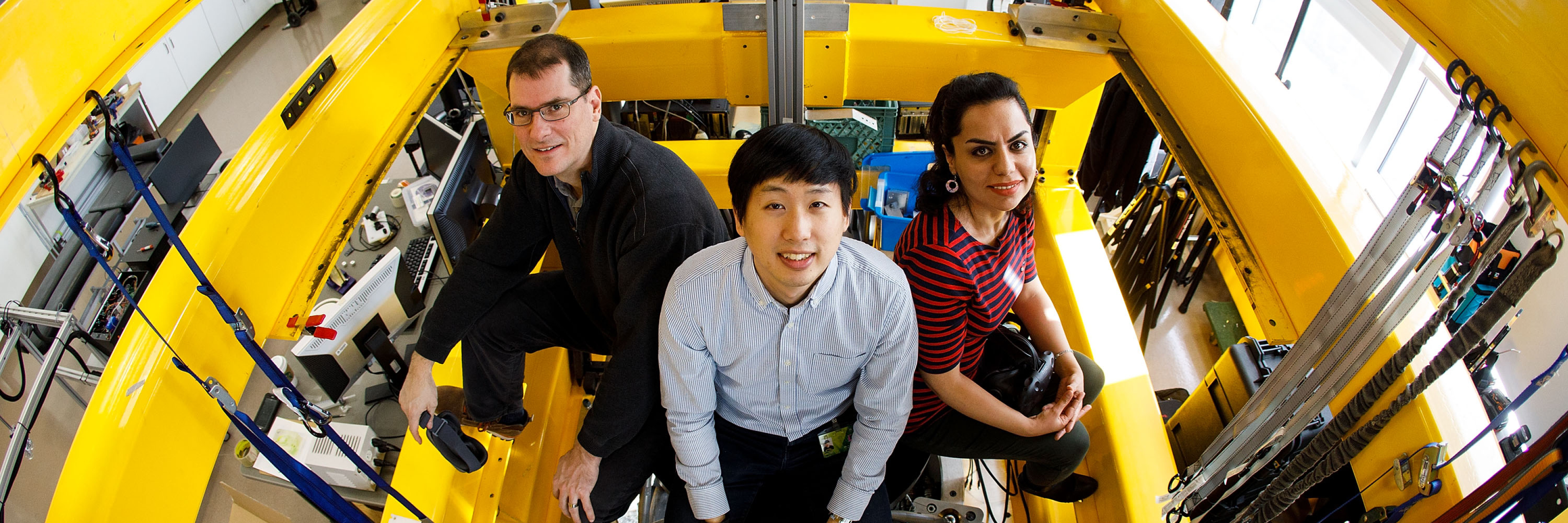Parallel Robotics
When people think of robotics, they often think of robotic arms that move themselves. However, many people don't know that there are robots that can move surfaces. We use these robots, which are typically used to move flight simulators, to understand how musculoskeletal and organ systems work and how they can be manipulated to improve health. Through studies using a unique parallel robot, we are able to better understand joint mechanics and balance and how we can assist those with medical issues such as kidney stones.
A case study
Kidney stones are clumps of minerals that can form within kidneys and cause excruciating pain. While not all Canadians get painful kidney stones, 1/10 will have a painful episode that requires a visit to the emergency department. Because of that, doctors and patients try to prevent further episodes or remove stones before they get too big. Treatments for removing stones include drugs to dissolve stones or shock wave therapy that creates smaller stones that can pass on their own. Unfortunately, removing stones using these methods can have dangerous side effects.
A new discovery
Recently, a kidney doctor noticed that many patients were passing kidney stones after riding the Big Thunder Mountain Railroad (BTMR), a rollercoaster at Walt Disney World in Florida. One patient even passed a stone after every ride! Thinking that maybe the rollercoaster "shook" the stones loose, the doctor made a clear rubber model of a kidney, filled it up with urine and kidney stones, then carried it on the ride in Florida. Not only did he show that the rollercoaster shook the kidney stones loose within the model, his experiment showed that the bumpiest part of the ride shook stones loose more often.
Unfortunately, there are challenges. While the above experiment showed that it may be possible for rollercoasters to shake kidney stones loose, we still don't know the answers to some basic questions like: would a rollercoaster help everyone with kidney stones? Do different rollercoasters help people with different types of kidney stones? Can riding a rollercoaster regularly prevent kidney stones from forming?
We have solutions!
Because it would be very difficult and expensive to answer these questions using a real rollercoaster, we developed a project to record the movements from the actual Disney rollercoaster, then replay these movements in our lab using a flight simulator robot. In this way, we can control the system to find the best way to shake people so their kidney stones pass. To do this, we've put together a team of bioengineers, computer scientists, and doctors, who are experts in robotics, computer modeling, artificial intelligence, and kidney medicine. This project specifically tests if the robot can help shake loose fragments following shock wave therapy compared to a no-treatment control. This project is a great example of how our Parallel Robotics division is working to have a positive impact on our daily lives!
